
Divnogorie National Park: Moldova's Natural Wonderland
Discover the natural beauty and ancient wonders of Divnogorie National Park, Moldova's serene escape for nature lovers and history enthusiasts alike.
Divnogorie National Park is a hidden gem in Moldova. Nestled away from the hustle and bustle, it offers a serene escape for nature lovers. The park is known for its stunning cliffs, lush forests, and beautiful rivers. Visitors can enjoy hiking trails that range from easy walks to more challenging treks. Along the way, you may spot a variety of wildlife, including deer, foxes, and many bird species. One of the park's highlights is its impressive caves. These natural formations have been shaped over thousands of years and are a must-see for any visitor. The caves are not only beautiful but also provide a cool respite from the sun. For those interested in history, Divnogorie National Park has several ancient ruins scattered throughout its landscape. These ruins offer a glimpse into the region's rich past and are fascinating to explore. Whether you are a nature enthusiast, a history buff, or just looking for a peaceful retreat, Divnogorie National Park has something for everyone.
Local tips in Divnogorie National Park
- Bring sturdy hiking shoes as the trails can be uneven and rocky.
- Pack a picnic lunch; there are many scenic spots to enjoy a meal.
- Visit early in the morning to avoid crowds and enjoy the tranquility.
- Don't forget to bring a flashlight for exploring the caves.
- Check the weather forecast and dress in layers, as temperatures can vary.
When is the best time to go to Divnogorie National Park?
Iconic landmarks you can’t miss
Rose Valley Park
Experience the tranquil beauty of Rose Valley Park, a serene escape in Chișinău, featuring colorful gardens, scenic trails, and cultural events.

Valea Morilor Park
Discover the natural beauty and vibrant atmosphere of Valea Morilor Park in Chișinău, a perfect escape for relaxation and recreation.

Stephen the Great Central Park
Discover the tranquility and beauty of Stephen the Great Central Park, a historic gem in the heart of Chișinău, Moldova, perfect for leisurely strolls and cultural exploration.

Dendrariu Park
Discover the serene beauty of Dendrariu Park, a lush oasis in Chișinău, perfect for relaxation and outdoor activities amid nature's splendor.

OrheiLand
Discover the thrill of OrheiLand, Moldova's premier amusement park, offering exciting rides, engaging shows, and family-friendly fun in a beautiful setting.

The Triumphal Arch
Discover the historical significance of The Triumphal Arch in Chișinău, a neoclassical monument that stands proud in the heart of Moldova's capital.

Soroca Fortress
Explore the historic Soroca Fortress, a stunning landmark in Moldova, with its unique architecture and rich cultural heritage, set against the beautiful Dniester River.

Eternity Memorial Complex
Explore the Eternity Memorial Complex in Chișinău, a serene memorial park dedicated to Moldova's heroes, blending beauty, history, and tranquility.

Alunelul Public Garden
Experience the natural beauty and tranquility of Alunelul Public Garden, a lush park in Chișinău, Moldova, perfect for relaxation and exploration.
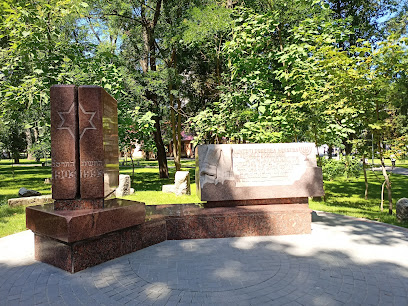
Stephen the Great Monument
Explore the Stephen the Great Monument, a majestic symbol of Moldova's rich history and national pride, set in the serene surroundings of Ștefan Cel Mare Park.

Cascade Stairs
Explore the iconic Cascade Stairs in Chișinău, Moldova, where stunning views and vibrant culture converge in an unforgettable experience.

Curchi Monastery
Discover the serenity and historical significance of Curchi Monastery in Moldova, a stunning architectural masterpiece surrounded by nature.

Orheiul Vechi Cultural and Natural Reserve
Explore Orheiul Vechi Cultural and Natural Reserve, a breathtaking blend of nature and history in the heart of Moldova, rich in archaeological treasures.

National History Museum of Moldova
Uncover the captivating history of Moldova through extensive exhibitions at the National History Museum in Chișinău, a cultural gem for every traveler.

Vasile Lupu monument
Explore the Vasile Lupu Monument in Orhei, Moldova—a historical tribute surrounded by serene gardens and rich cultural heritage.
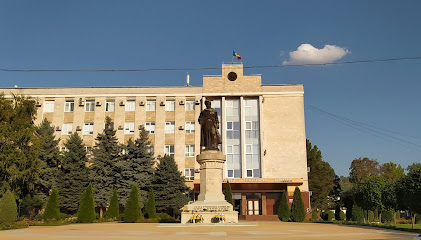
Unmissable attractions to see
National History Museum of Moldova
Explore the National History Museum of Moldova, a captivating journey through centuries of history and culture in the heart of Chișinău.

Suta de Movile
Discover the rich cultural heritage and stunning architecture of Suta de Movile, a historical gem nestled in the heart of Moldova.

Former Water Tower
Explore the Former Water Tower in Chișinău: a historic landmark offering stunning views and cultural insights into Moldova's rich heritage.

Vladimir Lenin Monument
Explore the Vladimir Lenin Monument in Chișinău, a historic memorial reflecting Moldova's Soviet past amidst a serene park setting.

Essential places to dine
Pegas Terrace & Restaurant
Experience exquisite European cuisine at Pegas Terrace & Restaurant in Chișinău, where stunning views meet delectable flavors.

Crème de la Crème
Experience authentic French cuisine at Crème de la Crème in Chișinău - from exquisite breakfasts to delightful café moments.

Oliva
Discover authentic Mediterranean cuisine at Oliva in Chișinău - where every dish tells a story of flavor and tradition.

Gök-Oguz
Discover authentic Bulgarian flavors at Gök-Oguz in Chișinău – home to mouthwatering mutton barbecue and warm hospitality.
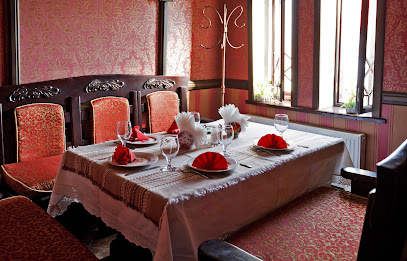
Gastrobar
Discover the exquisite blend of modern European cuisine and traditional Moldovan flavors at Gastrobar in Chișinău.
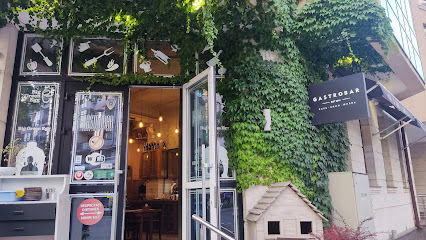
Epoca de Piatră
Discover authentic Moldovan flavors at Epoca de Piatră - a unique restaurant blending tradition with culinary excellence.
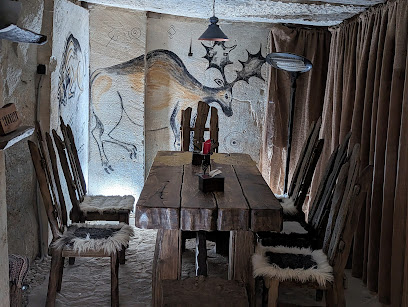
Taifas
Experience authentic Romanian cuisine at Taifas in Chișinău - where tradition meets flavor in every dish.

Villa Etnica
Discover authentic Moldovan cuisine at Villa Etnica in Butuceni – where tradition meets taste in a breathtaking setting.

Popasul Dacilor
Discover authentic Romanian flavors at Popasul Dacilor in Chișinău, where tradition meets culinary excellence in a charming setting.
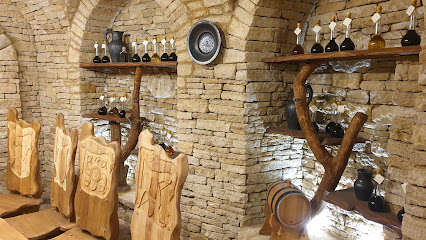
Eco-Resort Butuceni
Discover tranquility at Eco-Resort Butuceni in Moldova – where nature meets comfort for an unforgettable getaway.
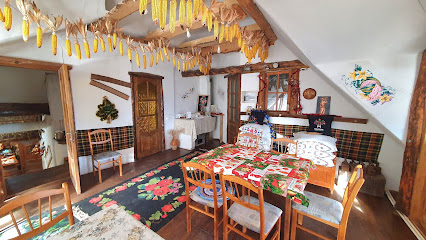
Doi Haiduci
Experience authentic Romanian cuisine and family-friendly hospitality at Doi Haiduci in picturesque Moldova.

Dolce Vita
Experience authentic Italian flavors at Dolce Vita in Orhei – where every slice tells a story!
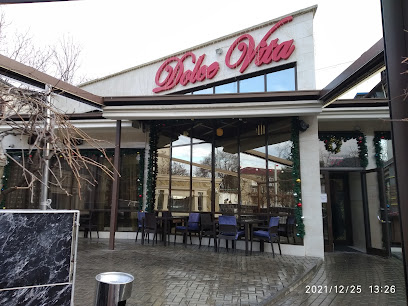
Acropolis
Experience the authentic flavors of Moldova at Acropolis restaurant in Orhei – where tradition meets culinary excellence.

Chateau Vartely
Experience exquisite wines and fine dining at Chateau Vartely, a top-tier winery nestled in Moldova's scenic landscape.

Safari
Experience authentic Moldovan cuisine at Safari Restaurant in Orhei – where tradition meets flavor in a cozy setting.

Markets, malls and hidden boutiques
Chisinau Central Market
Explore Chisinau Central Market: A vibrant hub of local flavors, crafts, and culture in the heart of Moldova's capital.

Rose Valley Park
Experience tranquility and beauty at Rose Valley Park, a stunning green oasis in the heart of Chișinău, perfect for relaxation and family fun.

Shopping MallDova
Explore Shopping MallDova, a premier shopping destination in Chișinău with diverse shops, dining, and entertainment options for every traveler.

Valea Morilor Park
Experience the natural beauty and tranquility of Valea Morilor Park, an urban oasis in Chișinău, perfect for relaxation and recreation.

Stephen the Great Central Park
Discover the serene beauty and historical significance of Stephen the Great Central Park, Chișinău's urban oasis filled with culture and nature.

Dendrariu Park
Experience the tranquility and natural beauty of Dendrariu Park, a must-visit urban oasis in Chișinău, Moldova, perfect for leisurely strolls and family outings.

OrheiLand
Discover the joy of adventure and thrill at OrheiLand, Moldova's top amusement park and tourist attraction for family fun.

Zity Mall
Explore Zity Mall in Chișinău for an unforgettable shopping experience with diverse dining and entertainment options.

Lower Dniester National Park
Discover the natural wonder of Lower Dniester National Park in Ukraine, a haven for wildlife and adventure enthusiasts amidst breathtaking landscapes.

Elat
Explore Elat in Chișinău: A vibrant shopping mall offering a variety of shops, dining options, and entertainment in the heart of Moldova.

Curchi Monastery
Discover the spiritual and architectural beauty of Curchi Monastery, a serene sanctuary nestled in the hills of Moldova, perfect for reflection and exploration.

Orheiul Vechi Cultural and Natural Reserve
Explore the beauty of Orheiul Vechi Cultural and Natural Reserve, where Moldova's rich history meets stunning natural landscapes.

Soyuz
Discover the perfect blend of shopping and entertainment at Soyuz Shopping Mall in Chișinău, where fun awaits for visitors of all ages.

La Izvor Park
Explore La Izvor Park, a serene urban oasis in Chișinău, Moldova, perfect for relaxation, family fun, and enjoying nature.

Parcul Ivanos
Explore the serene green landscapes of Parcul Ivanos, a peaceful city park in the heart of Orhei, Moldova, perfect for relaxation and recreation.

Essential bars & hidden hideouts
Orheiul Vechi Cultural and Natural Reserve
Explore the breathtaking Orheiul Vechi Reserve, a stunning blend of nature, history, and culture nestled in the heart of Moldova.

Eco-Resort Butuceni
Experience the tranquility of Eco-Resort Butuceni, where nature meets culture in the heart of Moldova.

PartyZAN Game Private Club
Experience the ultimate entertainment blend at PartyZAN Game Private Club, where gaming meets nightlife in Chișinău, Moldova.

Budweiser Grill & Pub
Savor grilled delights and craft brews in a lively atmosphere at Budweiser Grill & Pub, the heart of Chișinău's dining scene.

Doi Haiduci
Discover the charm of Doi Haiduci, a family-friendly retreat in Moldova offering delightful dining, comfortable accommodations, and relaxing wellness experiences.

Jack's Bar & Grill
Discover Jack's Bar & Grill: an American culinary experience in the heart of Chișinău, blending delicious food with a vibrant disco atmosphere.

Chateau Vartely
Explore Chateau Vartely: A captivating winery in Moldova offering exquisite wines, gourmet dining, and luxurious accommodations amidst stunning vineyards.

Vdrovapub
Discover the vibrant nightlife of Chișinău at Vdrovapub, where craft beers, tasty food, and live rock music come together for an unforgettable experience.
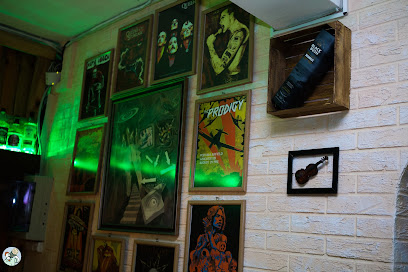
Safari
Explore the rich flavors of Moldova at Safari, a must-visit restaurant in Orhei offering a delightful blend of traditional and modern cuisine.

Beer House
Experience the best of European cuisine and vibrant atmosphere at Beer House in Chișinău.

Brother's Pub
Discover the lively atmosphere, delicious food, and vibrant nightlife at Brother's Pub in Chișinău, Moldova.

Myata Café & Bar
Discover Myata Café & Bar in Chișinău for a delightful dining experience with stunning park views, perfect for tourists and locals alike.

Cooper Karaoke Bar & Kitchen
Experience the vibrant nightlife of Chișinău at Cooper Karaoke Bar & Kitchen, where music, food, and fun collide for an unforgettable evening.

Taproom 27 - A Hoppy Place
Experience the best of Chișinău's craft beer scene at Taproom 27 - A Hoppy Place with a warm atmosphere and extensive drink selection.

Marlène
Discover the vibrant atmosphere and expertly crafted cocktails at Marlène, Chișinău’s must-visit cocktail bar, perfect for any occasion.

Local Phrases about Divnogorie National Park
-
- HelloSalut
[saˈlut] - GoodbyeLa revedere
[la re.veˈde.re] - YesDa
[da] - NoNu
[nu] - Please/You're welcomeTe rog
[te rog] - Thank youMulțumesc
[mul.tuˈmesk] - Excuse me/SorryScuzați-mă
[sku.zaʦi mə] - How are you?Ce faci?
[ʧe faʧi] - Fine. And you?Bine. Și tu?
[bi.ne ʃi tu] - Do you speak English?Vorbiți engleză?
[vorˈbit͡si enˈglezə] - I don't understandNu înțeleg
[nu ɨnt͡seˈleɡ]
- HelloSalut
-
- I'd like to see the menu, pleaseAș dori să văd meniul, vă rog
[aʃ doˈri sə vad ˈmeni.ul və rog] - I don't eat meatNu mănânc carne
[nu ˈmɨ.nɨŋk ˈkar.ne] - Cheers!Noroc!
[ˈnorok] - I would like to pay, pleaseAș dori să plătesc, vă rog
[aʃ doˈri sə ˈplə.tesk və rog]
- I'd like to see the menu, pleaseAș dori să văd meniul, vă rog
-
- Help!Ajutor!
[aˈʒu.tor] - Go away!Du-te!
[du.te] - Call the Police!Sună la Poliție!
[su.nə la poˈli.t͡si.e] - Call a doctor!Sună un doctor!
[su.nə un docˈtor] - I'm lostM-am pierdut
[mam pjerˈdut] - I'm illSunt bolnav
[sunt bolˈnav]
- Help!Ajutor!
-
- I'd like to buy...Aș dori să cumpăr...
[aʃ doˈri sə ˈkum.par] - I'm just lookingDoar mă uit
[do.ar mə uit] - How much is it?Cât costă?
[kɨt kosˈtə] - That's too expensiveEste prea scump
[ˈes.te pre.a skump] - Can you lower the price?Puteți să scădeți prețul?
[puˈteɨ̯t͡si sə ˈskə.deɨ̯t͡s pre.t͡sul]
- I'd like to buy...Aș dori să cumpăr...
-
- What time is it?Cât este ceasul?
[kɨt ˈes.te t͡ʃe̯a.sul] - It's one o'clockEste ora unu
[ˈes.te o.ra unu] - Half past (10)Jumătate (la zece)
[ʒu.məˈta.te (la ˈʣe.t͡ʃe)] - MorningDimineața
[di.mi.ne̯a.tsə] - AfternoonDupă-amiază
[du.pə a.miˈa.zə] - EveningSeara
[se̯a.ra] - YesterdayIeri
[ˈjerj] - TodayAstăzi
[as.təz] - TomorrowMâine
[mɨˈjne] - 1Unu
[unu] - 2Doi
[doj] - 3Treisprezece
[trej.spreˈze.t͡ʃe] - 4Patru
[ˈpatru] - 5Cinci
[ˈʧint͡ʃʲ] - 6Șase
[ʃaˈse] - 7Șapte
[ˈʃap.te] - 8Opt
[opt] - 9Nouă
[noˈwə] - 10Zece
[ˈʣe.t͡ʃe]
- What time is it?Cât este ceasul?
-
- Where's a/the...?Unde este unul/o...
[unˈde es.te uˈnul/o] - What's the address?Care este adresa?
[ˈka.re es.te aˈdresə] - Can you show me (on the map)?Puteți să-mi arătați (pe hartă)?
[puˈteɨ̯t͡si sə mi aˈrə.taʦi (pe harˈtə)] - When's the next (bus)?Când este următorul (autobuz)?
[kɨnd es.te urˈməto.rul (au.toˈbuz)] - A ticket (to ....)Un bilet (către ....)
[un biˈlet (kə.tre)]
- Where's a/the...?Unde este unul/o...
History of Divnogorie National Park
-
Divnogorie National Park is home to several ancient settlements that date back thousands of years. Archaeological excavations have revealed remnants of Neolithic cultures, indicating that the area was inhabited as early as 5,000 BCE. The discovery of pottery, tools, and dwellings provides a glimpse into the lives of early human settlers who thrived in this fertile region.
-
During the medieval period, Divnogorie National Park became a spiritual center with the establishment of numerous monasteries and cave complexes. The most notable of these is the Cave Monastery of St. Anthony, carved directly into the limestone cliffs. These religious sites served as places of worship, refuge, and learning for monks and pilgrims throughout the centuries.
-
In the 16th century, the region that includes Divnogorie National Park came under Ottoman control. The Ottomans left a significant mark on the local culture and architecture, introducing new styles and building techniques. Remnants of Ottoman fortifications and buildings can still be seen within the park, offering a unique blend of Eastern and Western influences.
-
In the 18th century, the area became part of the expanding Russian Empire. This era brought about significant changes, including the introduction of modern agricultural practices and infrastructure development. The park's landscape was transformed with the construction of roads, railways, and settlements, facilitating easier access and enhancing its economic importance.
-
The 20th century saw Divnogorie National Park undergoing further transformations during the Soviet era. The park was designated as a protected area in the mid-20th century, leading to increased conservation efforts. Soviet policies also aimed at promoting tourism, resulting in the development of visitor facilities and educational programs to highlight the park's natural and historical significance.
-
In recent years, Divnogorie National Park has focused on preserving its rich cultural heritage. Efforts have been made to restore and maintain historical sites, protect archaeological findings, and promote sustainable tourism. The park now serves as a living museum, where visitors can explore its diverse history and immerse themselves in the cultural tapestry that has shaped the region over millennia.
Divnogorie National Park Essentials
-
Divnogorie National Park is located in Moldova, and the nearest major city is Chișinău, which has the Chișinău International Airport (KIV). From the airport, you can take a taxi, bus, or rental car to reach the park. The drive from Chișinău to Divnogorie National Park typically takes around 1.5 to 2 hours. Public buses and minibuses (marshrutkas) also operate from the city center to the park, providing an affordable and scenic route.
-
Within Divnogorie National Park, the best way to explore is on foot, given the extensive network of trails. For longer distances, bicycles can be rented at the park's visitor center. Local taxis are available but may be scarce, so it's advisable to arrange transportation in advance if you plan to visit surrounding areas. Car rentals are also an option for greater flexibility.
-
The official currency in Moldova is the Moldovan Leu (MDL). Credit cards are accepted in most hotels, restaurants, and larger shops in Chișinău, but in and around Divnogorie National Park, it's wise to carry cash. ATMs are available in the nearby towns and cities, but it's recommended to withdraw sufficient cash before heading to the park.
-
Divnogorie National Park is generally safe for tourists. However, as with any travel destination, it is important to take standard precautions. Avoid walking alone at night in unfamiliar areas and keep an eye on your belongings in crowded places. There are no specific areas with high crime rates targeting tourists, but staying vigilant is always advisable.
-
In case of emergency, dial 112 for immediate assistance. There are local police stations and medical facilities in nearby towns. It is highly recommended to have travel insurance that covers medical emergencies. For minor health issues, pharmacies are available in nearby towns where you can purchase over-the-counter medications.
-
Fashion: Do wear comfortable and sturdy footwear suitable for hiking. Avoid overly revealing clothing, especially when visiting religious sites. Religion: Do respect local customs and traditions. Always cover your head when entering churches and monasteries. Public Transport: Do be respectful and give up your seat to elderly passengers. Don't eat or drink on public transport. Greetings: Do greet people with a handshake. A slight bow of the head is also a sign of respect. Eating & Drinking: Do try local delicacies and accept food offerings graciously. Don’t refuse hospitality, as it is considered impolite.
-
To experience Divnogorie National Park like a local, visit during the early morning hours when the park is less crowded. Engage with local guides who can provide deeper insights into the park’s history and natural features. Don’t miss trying local Moldovan wines and traditional dishes at nearby eateries. For a unique experience, participate in local festivals or events that may coincide with your visit.
Trending Landmarks in Divnogorie National Park
-
Rose Valley Park
-
Valea Morilor Park
-
Stephen the Great Central Park
-
Dendrariu Park
-
OrheiLand
-
The Triumphal Arch
-
Soroca Fortress
-
Eternity Memorial Complex
-
Alunelul Public Garden
-
Stephen the Great Monument
-
Cascade Stairs
-
Curchi Monastery
-
Orheiul Vechi Cultural and Natural Reserve
-
National History Museum of Moldova
-
Vasile Lupu monument
Nearby Cities to Divnogorie National Park
-
Things To Do in Chișinău
-
Things To Do in Tiraspol
-
Things To Do in Iasi
-
Things To Do in Suceava
-
Things To Do in Vinnytsia
-
Things To Do in Focsani
-
Things To Do in Chernivtsi
-
Things To Do in Khmelnytskyi
-
Things To Do in Kropyvnytskyi
-
Things To Do in Kherson
-
Things To Do in Brasov
-
Things To Do in Sighisoara
-
Things To Do in Cherkasy
-
Things To Do in Ternopil
-
Things To Do in Ivano-Frankivsk



